A worksheet to help students understand imagery in poetry.
Use this teaching resource when studying poetry in your classroom.
Students read the poem, Tiger, then investigate the use of imagery in the poem.
Answers for teachers are also provided.
Updated: 14 Jun 2023
A worksheet to help students understand imagery in poetry.
Non-Editable: PDF
Pages: 3 Pages
Years: 3 - 4
Understand how different types of texts vary in use of language choices, depending on their purpose and context (for example, tense and types of sentences)Elaborationsbecoming familiar with typical structural stages and language features of various t...
Read an increasing range of different types of texts by combining contextual, semantic, grammatical and phonic knowledge, using text processing strategies, for example monitoring, predicting, confirming, rereading, reading on and self-correctingElabo...
Understand how texts vary in complexity and technicality depending on the approach to the topic, the purpose and the intended audienceElaborationsbecoming familiar with the typical stages and language features of such text types as: simple narrative,...
Identify characteristic features used in imaginative, informative and persuasive texts to meet the purpose of the textElaborationsdescribing the language which authors use to create imaginary worlds; how textual features such as headings, subheadings...
Read different types of texts by combining contextual , semantic, grammatical and phonic knowledge using text processing strategies for example monitoring meaning, cross checking and reviewingElaborationsreading new and different kinds of texts with...
Uses an increasing range of skills, strategies and knowledge to fluently read, view and comprehend a range of texts on increasingly challenging topics in different media and technologies
Identifies and uses language forms and features in their own writing appropriate to a range of purposes, audiences and contexts
Identifies and compares different kinds of texts when reading and viewing and shows an understanding of purpose, audience and subject matter
Understand how different types of texts vary in use of language choices, depending on their purpose, audience and context, including tense and types of sentences
Read an increasing range of imaginative, informative and persuasive texts by combining phonic, semantic, contextual and grammatical knowledge, using text processing strategies, including confirming, rereading and cross-checking
Identify features used in imaginative, informative and persuasive texts to meet the purpose of the text, and understand how texts vary in complexity and technicality depending on the approach to the topic, the purpose and the intended audience
Read different types of texts for specific purposes by combining phonic, semantic, contextual and grammatical knowledge using text processing strategies, including monitoring meaning, skimming, scanning and reviewing
Describe how texts across the curriculum use different language features and structures relevant to their purpose
Read a range of texts using phonic, semantic and grammatical knowledge to read accurately and fluently, re-reading and self-correcting when required
Identify how texts across the curriculum have different language features and are typically organised into characteristic stages depending on purposes
Identify the characteristic features used in imaginative, informative and persuasive texts to meet the purpose of the text
Read different types of texts, integrating phonic, semantic and grammatical knowledge to read accurately and fluently, re-reading and self-correcting when needed
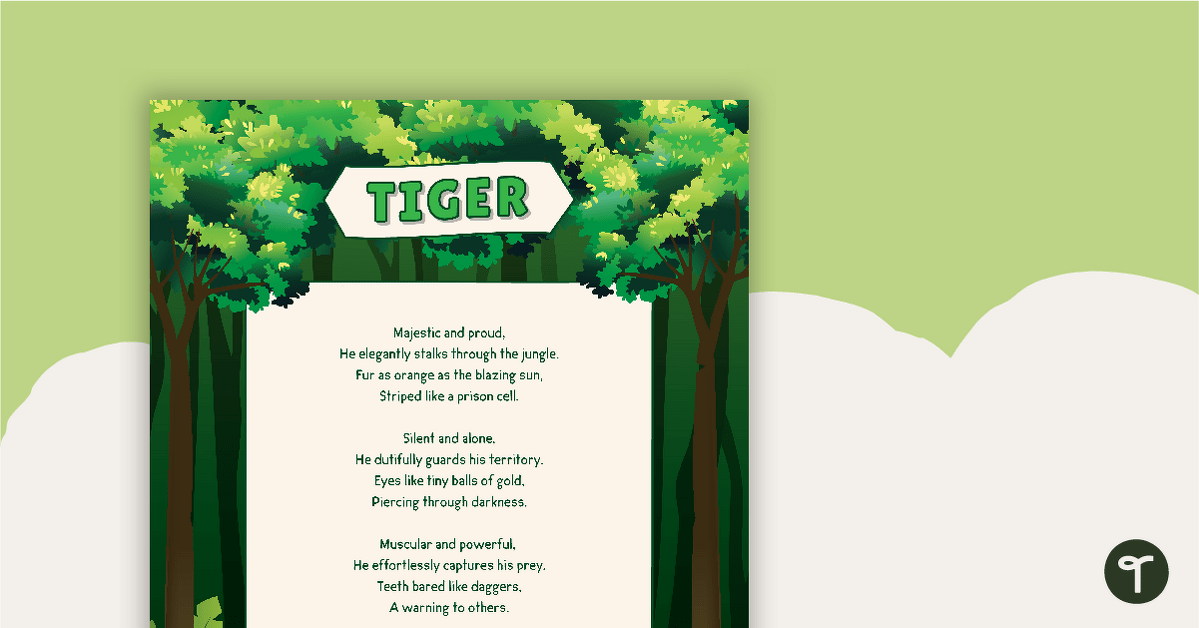
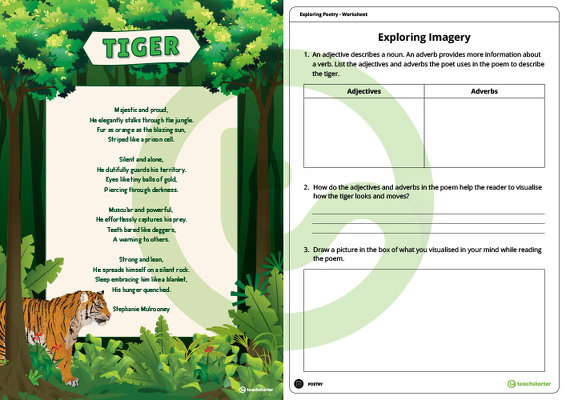
A worksheet to help students understand imagery in poetry.
Use this teaching resource when studying poetry in your classroom.
Students read the poem, Tiger, then investigate the use of imagery in the poem.
Answers for teachers are also provided.
Understand how different types of texts vary in use of language choices, depending on their purpose and context (for example, tense and types of sentences)Elaborationsbecoming familiar with typical structural stages and language features of various t...
Read an increasing range of different types of texts by combining contextual, semantic, grammatical and phonic knowledge, using text processing strategies, for example monitoring, predicting, confirming, rereading, reading on and self-correctingElabo...
Understand how texts vary in complexity and technicality depending on the approach to the topic, the purpose and the intended audienceElaborationsbecoming familiar with the typical stages and language features of such text types as: simple narrative,...
Identify characteristic features used in imaginative, informative and persuasive texts to meet the purpose of the textElaborationsdescribing the language which authors use to create imaginary worlds; how textual features such as headings, subheadings...
Read different types of texts by combining contextual , semantic, grammatical and phonic knowledge using text processing strategies for example monitoring meaning, cross checking and reviewingElaborationsreading new and different kinds of texts with...
Uses an increasing range of skills, strategies and knowledge to fluently read, view and comprehend a range of texts on increasingly challenging topics in different media and technologies
Identifies and uses language forms and features in their own writing appropriate to a range of purposes, audiences and contexts
Identifies and compares different kinds of texts when reading and viewing and shows an understanding of purpose, audience and subject matter
Understand how different types of texts vary in use of language choices, depending on their purpose, audience and context, including tense and types of sentences
Read an increasing range of imaginative, informative and persuasive texts by combining phonic, semantic, contextual and grammatical knowledge, using text processing strategies, including confirming, rereading and cross-checking
Identify features used in imaginative, informative and persuasive texts to meet the purpose of the text, and understand how texts vary in complexity and technicality depending on the approach to the topic, the purpose and the intended audience
Read different types of texts for specific purposes by combining phonic, semantic, contextual and grammatical knowledge using text processing strategies, including monitoring meaning, skimming, scanning and reviewing
Describe how texts across the curriculum use different language features and structures relevant to their purpose
Read a range of texts using phonic, semantic and grammatical knowledge to read accurately and fluently, re-reading and self-correcting when required
Identify how texts across the curriculum have different language features and are typically organised into characteristic stages depending on purposes
Identify the characteristic features used in imaginative, informative and persuasive texts to meet the purpose of the text
Read different types of texts, integrating phonic, semantic and grammatical knowledge to read accurately and fluently, re-reading and self-correcting when needed

We create premium quality, downloadable teaching resources for primary/elementary school teachers that make classrooms buzz!
Would you like something changed or customised on this resource? While our team makes every effort to complete change suggestions, we can't guarantee that every change will be completed.
Did you spot an error on this resource? Please let us know and we will fix it shortly.
Are you having trouble downloading or viewing this resource? Please try the following steps:
If you are still having difficulty, please visit the Teach Starter Help Desk or contact us .

A fun game for students to play in small groups to consolidate their understanding of adjectives.
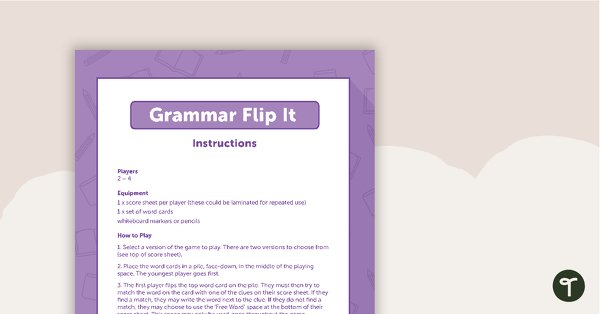
A fun game for students to play in small groups to consolidate their understanding of adverbs.

A set of 12 Queensland Cursive entry and exit shuttles to join together to make a handwriting spaceship.
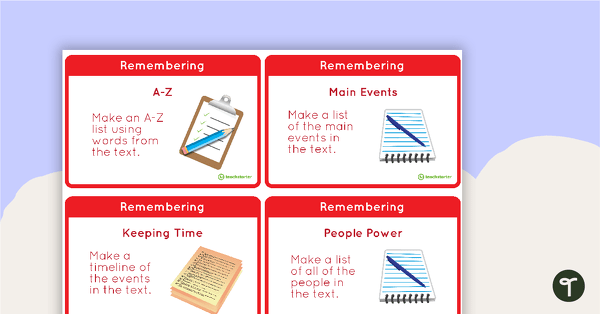
44 Bloom's Taxonomy fast finisher activity cards.
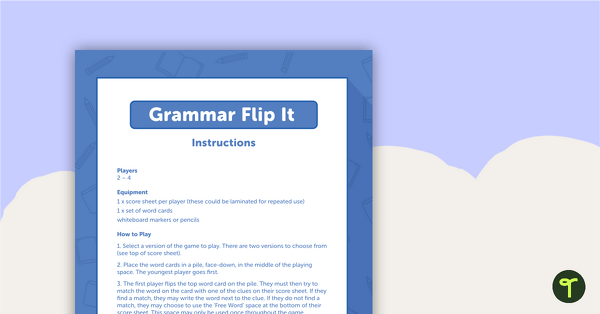
A fun game for students to play in small groups to consolidate their understanding of verbs.

A set of 12 Queensland Cursive entry and exit shuttles to join together to make a handwriting spaceship.

A set of 12 Queensland Cursive entry and exit shuttles to join together to make a handwriting spaceship.
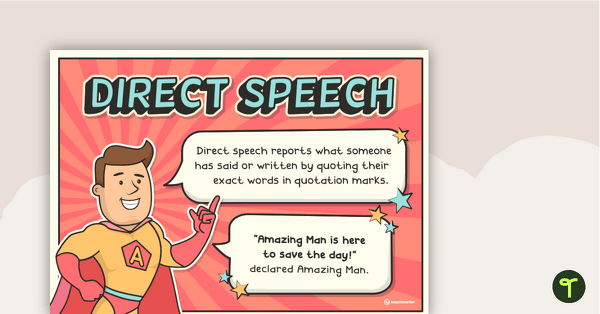
Amazing Man helps students to learn what both direct and indirect speech entails as well as providing examples on how they can use it themselves.
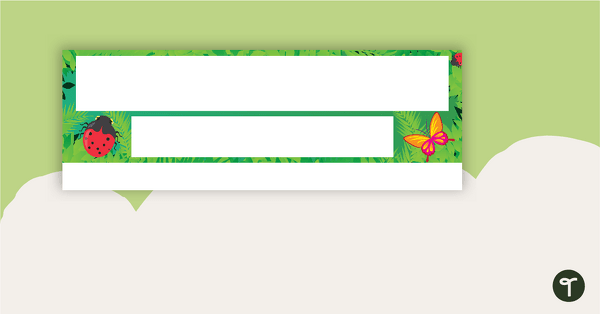
Lower Grade Desk Plates with the alphabet, number line and student's name on them.
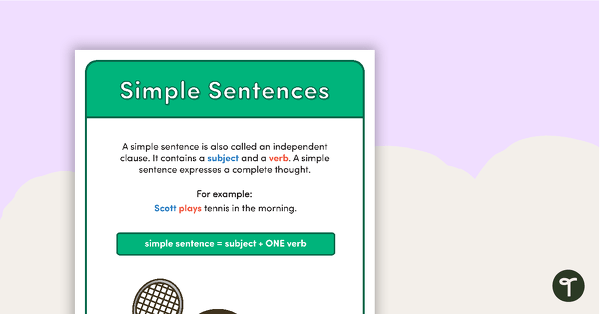
A set of 7 posters outlining the structure of various types of sentences.
0 Comments
Write a review to help other teachers and parents like yourself. If you'd like to request a change to this resource, or report an error, select the corresponding tab above.